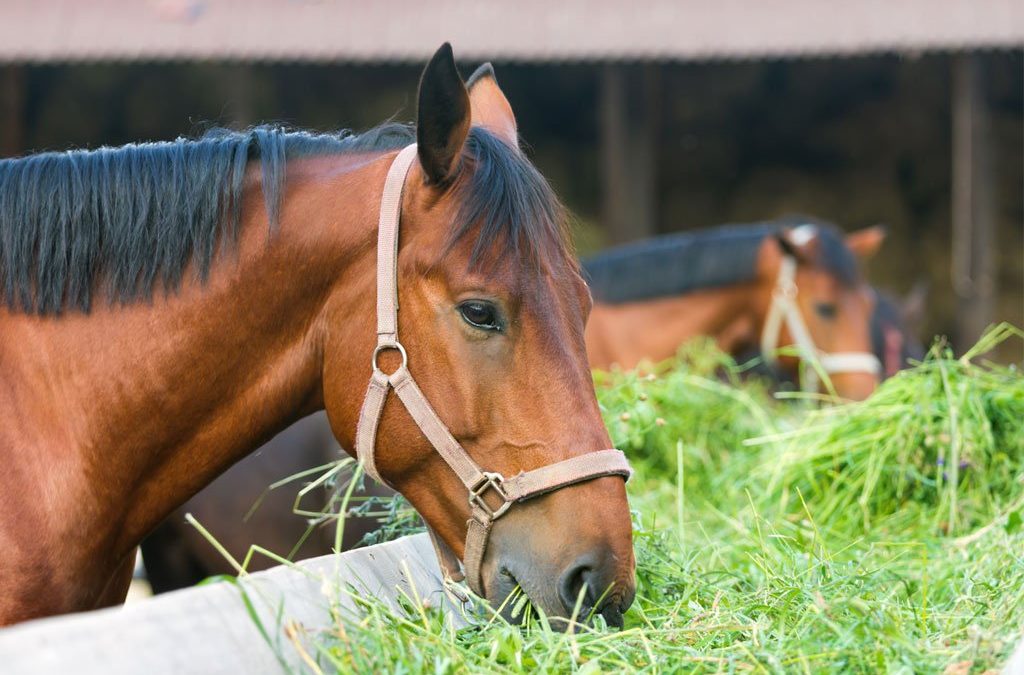Picky Eaters – Feeding Strategies for the Finicky Horse
Feeding horses with a selective palate can become a frustrating matter, but horses that become particular about what they want in their feed tub are not uncommon. Horses that compete and train at levels that expend great amounts of energy can have trouble consuming enough feed to meet energy (calorie) demands. Older and recuperating horses also tend to back off their feed as well. In order to maintain your horse’s nutritional demands and overall body condition, well-organized feeding strategies become vital.
Always remember to first evaluate your horse for any underlying problem that may cause him to stop eating, such as dental pain and digestive tract issues like ulcers.
Feeding Strategies – Concentrates
The horse is an herbivore designed to graze forages on a continuous basis, so feeding large amounts of grain, which is not a natural feedstuff for the horse, can lead to starch overload in the hindgut and therefore presents a problem for horses that are finicky eaters but need the calories to maintain good body condition. While grains are very palatable and high in digestible energy, remember to incorporate a reasonable amount in the horse’s diet. You may also want to consider including other ingredients like vegetable oils and soluble fibers, most notably beet pulp, soybean hulls, and rice bran, into your horse’s ration because these ingredients can help increase the ration’s digestible energy content without increasing the risk of starch overload. Remember that:
- Fats and fibers do not cause an increase in blood glucose when consumed.
- Soluble fibers and oils are palatable to horses and can actually make the ration taste better.
If you feed concentrates to a finicky eater, pick products in pelleted or extruded forms. These types of concentrates have been ground, mixed together and then heated and formed into small nuggets. Two beneficial points about pelleted or extruded concentrates are:
- The heating process actually alters the starch molecule, making it more digestible and easier to absorb, so less change in blood glucose levels occurs after a meal.
- Pelleted and extruded rations help prevent the sorting of vitamins and minerals out of the mixture, which many picky eaters are quite adept at doing.
When feeding concentrates, remember to break it up into as many small feedings as possible, as research has shown the capacity to overload the hindgut with grains occurs when the horse is fed more than 0.4% of its body weight at any one feeding. For a 1,000 lb. horse, this means no more than 4 -5 lb. of concentrate mix per feeding. Horses also prefer fresh, small meals to large meals that have been sitting in the feed tub for a while.
Feeding Strategies – Forages
The basis of all equine diets is forage, so a horse should always have ample amounts of quality forage available at all times. For the performance horse, a good forage choice is a grass and legume mixed hay. Remember that the quality of forage is determined by:
- Stage of maturity when cut
- Growing conditions
- Amount of fertilization of the field in which it is grown
- How it is prepared and stored after being cut
If you have a horse that needs to gain weight and is selective about the forages it consumers, feed an alfalfa hay. Alfalfa contains more calories and is much more digestible than most grass hay.
Take Home Message
While feeding the finicky horse can be a difficult task, a well thought out feeding strategy and accurately identifying nutrient requirements can help provide balanced nutrition. In addition to looking at what you are putting in your horse’s feed tub, always take a minute to examine his surroundings. Stress and discomfort will also impact your horse’s desire to eat; it is just as important to adjust environmental influences much as his ration to promote overall mental and physical health.
This blog post was originally posted on Wednesday, December 21st, 2011 at Equine Nutrition and Health Services Blog. Blog article was re-posted with permission from blog owner, all rights reserved.


